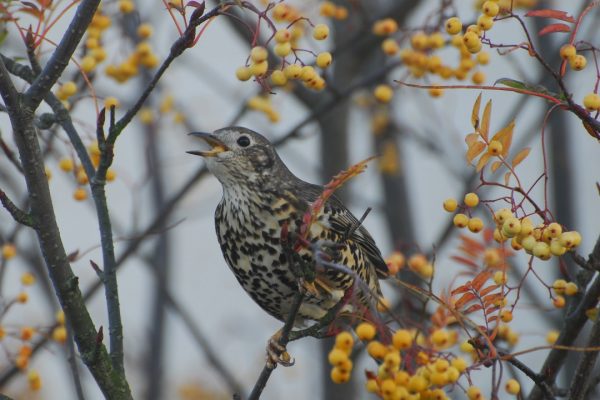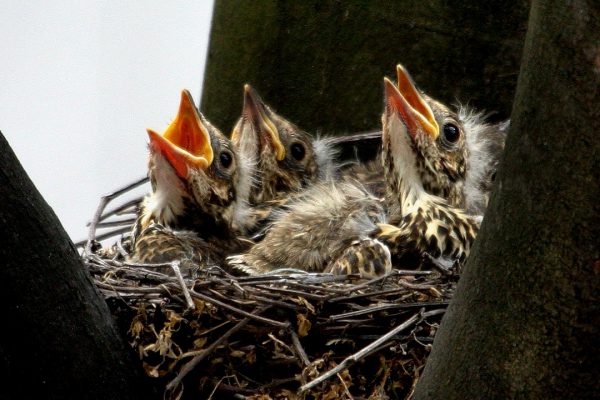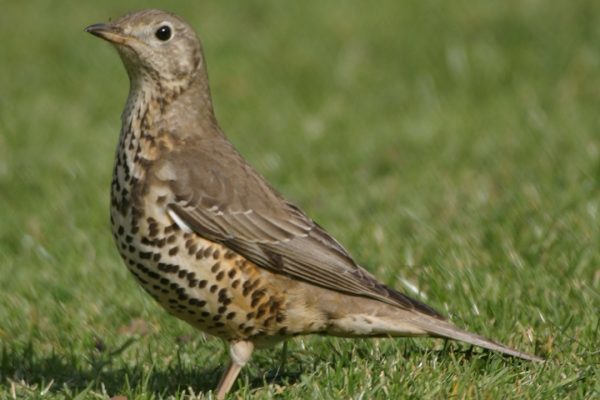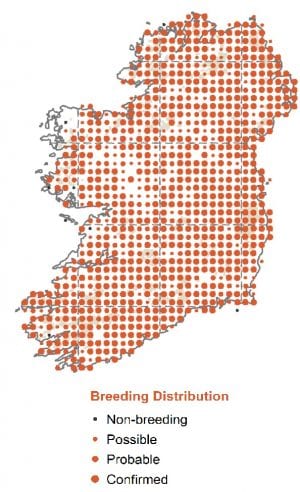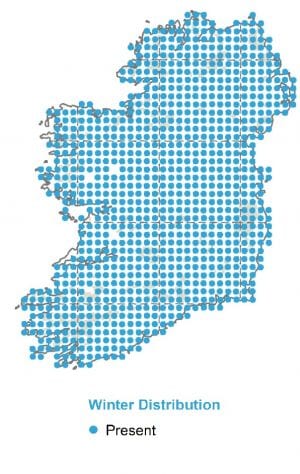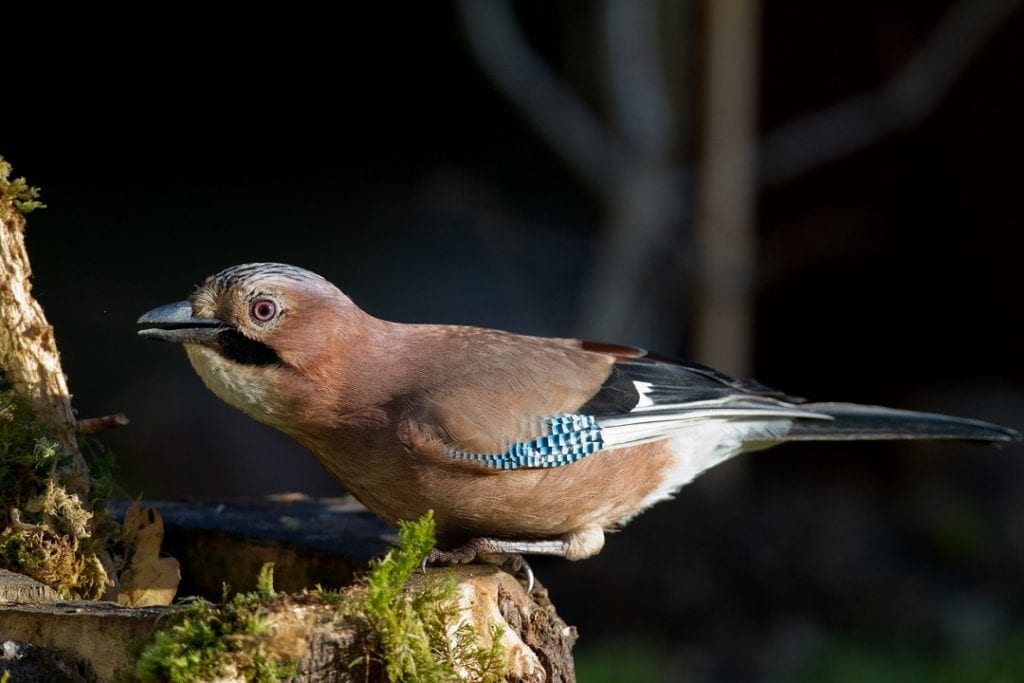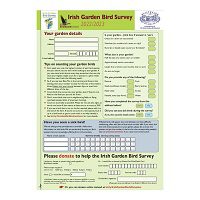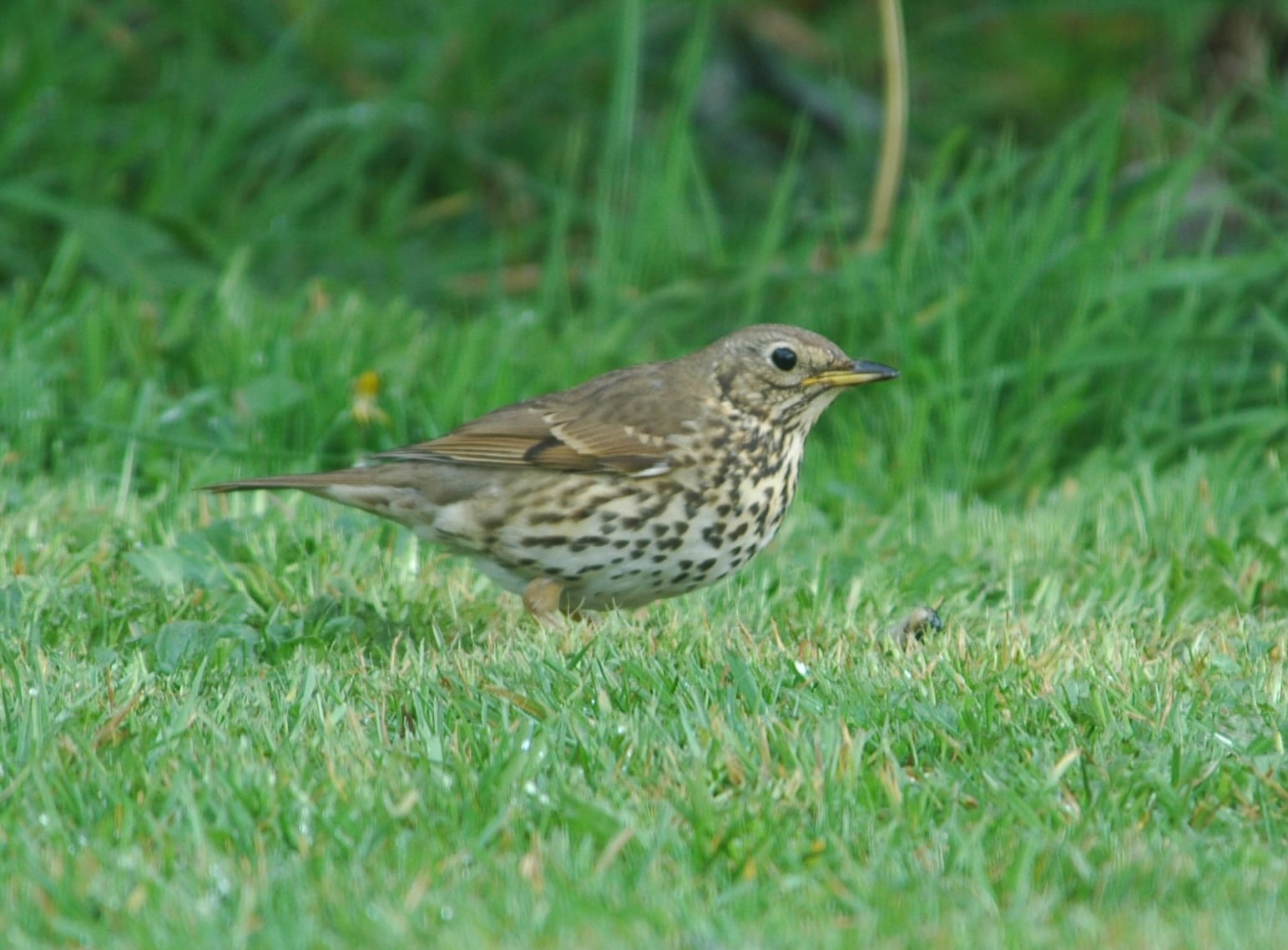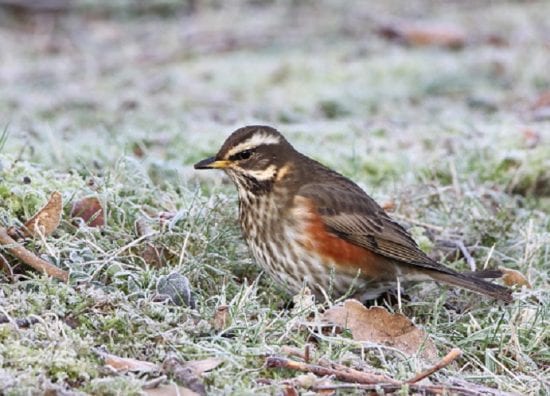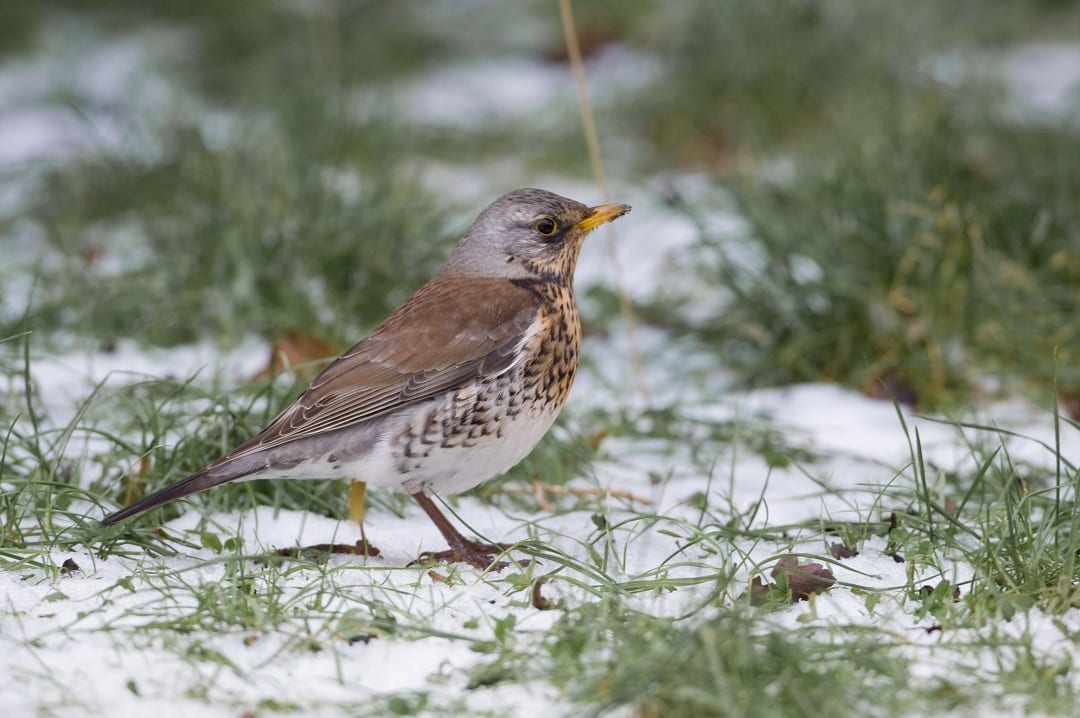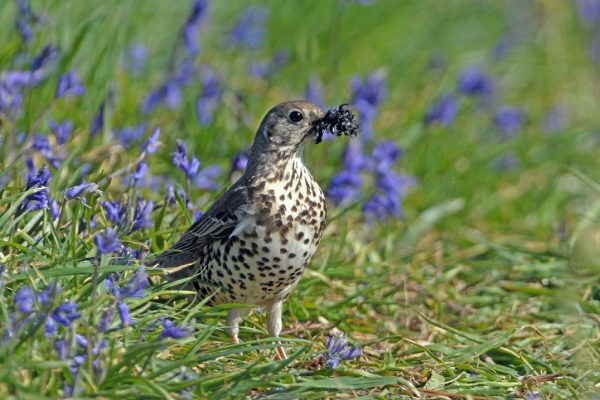
Mistle Thrush
| Irish Name: | Smólach mór |
| Scientific name: | Turdus viscivorus |
| Bird Family: | Thrushes |
green
Conservation status
Conservation status
Status
Common resident. Additional birds arrive from the Continent in winter.
Identification
About the same size as a Blackbird. Has a very upright stance in comparison to either Song thrush or Blackbird. The face is white with some black markings, while the eye has a distinct white eyering. The crown, nape and back of the Mistle Thrush are plain brown. The throat and upper part are white with some black streaks. This is bordered by a brownish smudge across the breast, with the rest of the underparts white with black spots. The rump is pale grey-brown, while the tail is brown - the outer tail feathers being white. The legs are pink in contrast to the dark colouring of the Fieldfare.
Voice
The most commonly heard call is a loud, rattling “prrrrt”, usually given when a predator is spotted or another bird lands in a favoured berry tree. The song is very similar to that of the Blackbird, though less musical and the phrases are more widely spaced.
Diet
In winter, Mistle Thrushes feed mainly on berries and will vigorously defend a favoured tree from all other birds. Also feeds on insects and earthworms.
Breeding
Breeds throughout Ireland, though less commonly in the south. Mistle Thrushes are less frequently seen in suburban gardens than Blackbirds and Song Thrushes, favouring larger parks and rural areas.
Wintering
Irish Mistle Thrushes are resident, with some limited immigration of Continental birds.
Monitored by
Blog posts about this bird
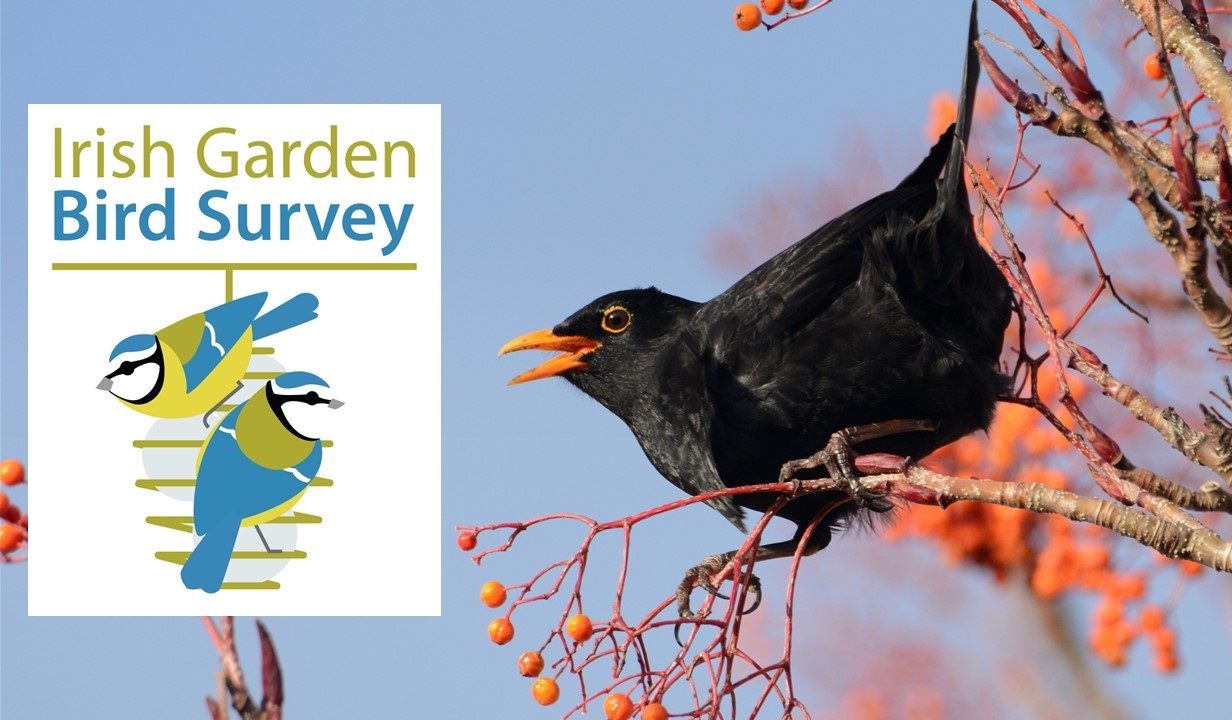
Large influx of Scandinavian finches to Irish gardens last winter. The Irish Garden Bird Survey has begun again!
BirdWatch Ireland’s Irish Garden Bird Survey returns next week, for the 34th consecutive winter. The survey is very simple and asks people to spend a short amount of time each week watching their garden birds and recording what they see. It plays an important role in tracking the fortunes of some of Ireland’s best-loved wildlife.
On Their Way
BirdWatch Ireland has received lots of correspondence from concerned people all around the country whose garden birds are ‘missing’. This is simply a result of the abundance of natural food available to them in the countryside, but as the weeks go on and weather gets colder more and more birds will be retreating to gardens for food and shelter, just in time for the Irish Garden Bird Survey!
Rare Arrivals
Last winter there was a big increase in the number of Bramblings in Irish gardens. Bramblings are a close relative of our native Chaffinch that breed in northern Scandinavia and are quite rare in Ireland. Every few years however, we get a big influx, and last year 4% of gardens in 21 counties had at least one of these Scandinavian migrants hiding amongst their Chaffinches. “There was a noticeable spike in their numbers in mid-January, corresponding with the lowest recorded temperatures of the winter, highlighting just how important it is to put out food and water in advance of frost or snow!” said Brian Burke, who coordinates the survey for Birdwatch Ireland.
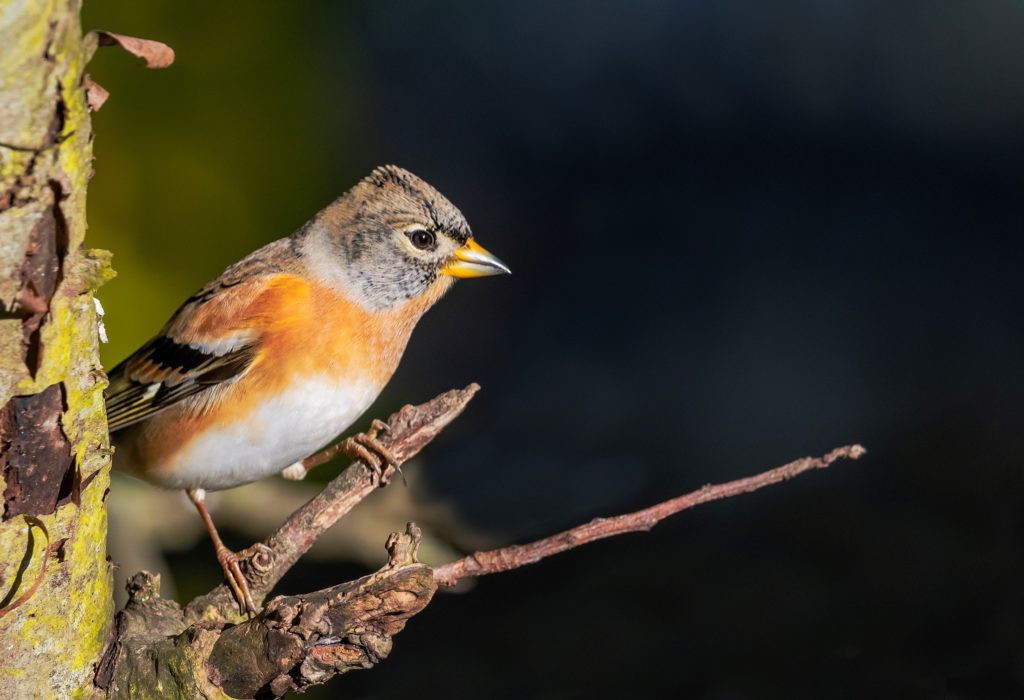
Other notable rarities include the invasive Ring-necked Parakeets in a select few Dublin gardens and a Rustic Bunting in a garden in County Down. Rustic Buntings nest in woodlands in eastern Scandinavia and Siberia and spend the winter in south-east Asia, and this was only the 23rd record of the species in Ireland. A Mediterranean Gull in a Dublin garden represents only the third record of the species in the Irish Garden Bird Survey, though they’re definitely increasing in coastal habitats.
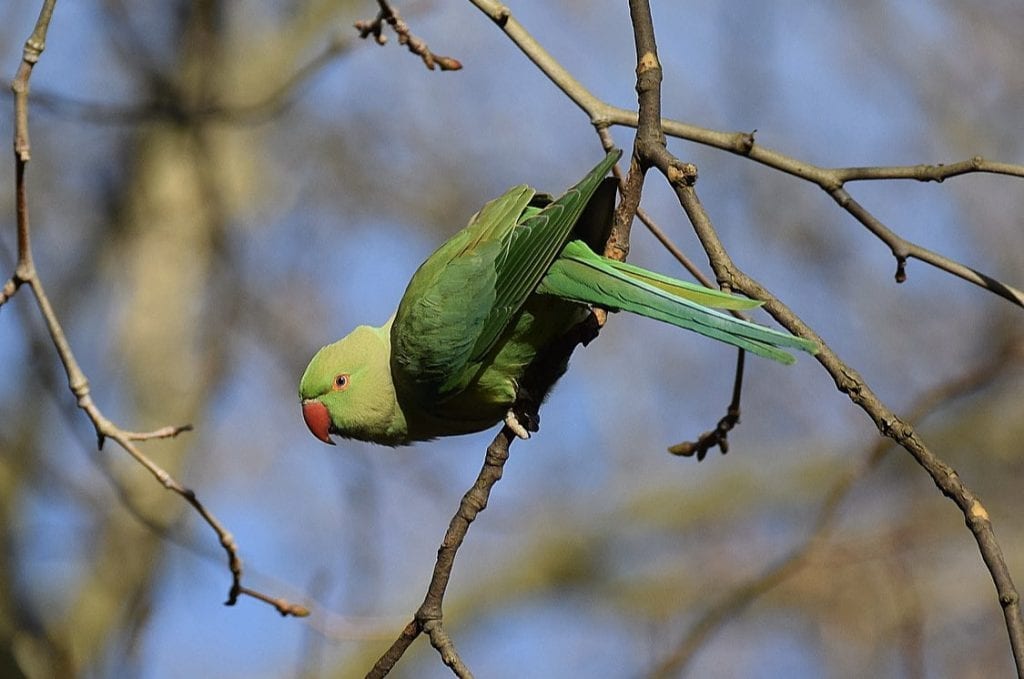
“Taking part in the survey is really easy, and while it doesn’t require a huge commitment, it definitely provides people with extra motivation to keep an even closer eye on their garden birds, and that’s when you might spot something new,” said Brian. “It might be something rare at a national level, or something common but that you’ve never seen in your garden before. There’s excitement either way!”
Common Species, increases and decreases
Robins were seen in the highest proportion of gardens last winter (>99%), followed by Blackbird (>97%) and Blue Tit (>96%), with Magpie moving up to fourth place (90%). House Sparrows were the most numerous birds recorded (average count of 9-10 per garden), followed by Starling and Goldfinch (8-9 per garden).
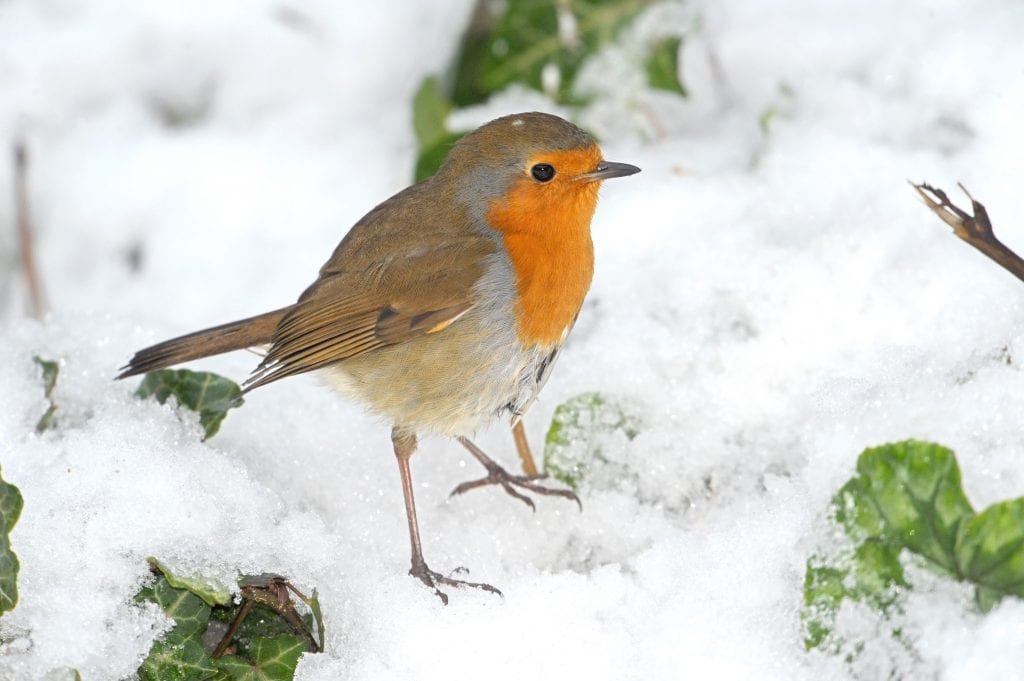
Our native hibernicus subspecies of Coal Tit fell to its worst ranking in 20 years (11th place, <80% of gardens) after a series of poor years. Another species showing significant decreases was Song Thrush (down 10%, from 13th to 17th), which may have suffered high nest losses because of the cold start to the summer the previous year. Pied Wagtail, also known by many as the ‘Willy Wagtail’, also declined by 10%.
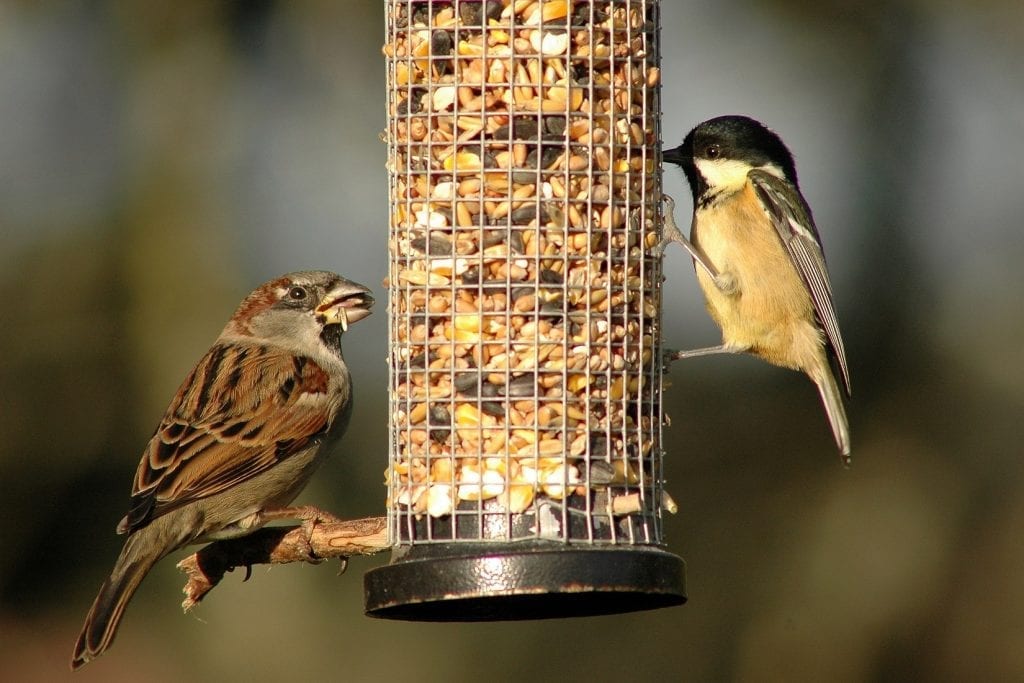
Notable increases include the Jay, a colourful member of the crow family which also belongs to a unique Irish hibernicus subspecies. They were recorded in more than 10% of gardens for the first time ever, reflecting a widespread increase in the Irish population. More common members of the crow family, such as Jackdaw, Rook and Hooded Crow all increased last year, as did all three of our most common pigeon species: Woodpigeon, Collared Dove and Feral Pigeon. Great Spotted Woodpeckers, which first began their colonisation of Ireland around 2005, were recorded in 5% of Irish gardens, across 21 counties, and continue to increase across the country, favouring peanut feeders in the winter.
Avian Flu and Trichomonosis in Garden Birds
BirdWatch Ireland would like to stress that the risk of Avian Flu in garden birds is very low at present and that it is safe to continue to feed your garden birds. Avian Flu decimated some seabird species such as Gannet this summer, with hundreds of dead and unwell birds washing up on beaches, while in more recent months it has been swans, geese and ducks that have been infected. “Bird flu is currently circulating in our waterbird species, but these birds don’t tend to interact closely with garden birds. Swans and sparrows don’t hang out together, so it’s unlikely bird flu will be brought into gardens. It’s a situation we’ll continue to keep a close eye on, however,” said Brian.
The main risk to garden birds continues to be the trichomonas parasite, which has been infecting finches for over 15 years now. Greenfinches were present in fewer than half of gardens last winter, down from over 90% of gardens in the early 2000’s. Also, Chaffinches in urban areas are declining faster than those in rural parts of the country, apparently because there are more feeders in urban gardens where they pick up the infection. “If you’re putting out feeders, you also have a responsibility to clean them thoroughly at least once a week to ensure the costs don’t outweigh the benefits to the birds,” notes Brian.
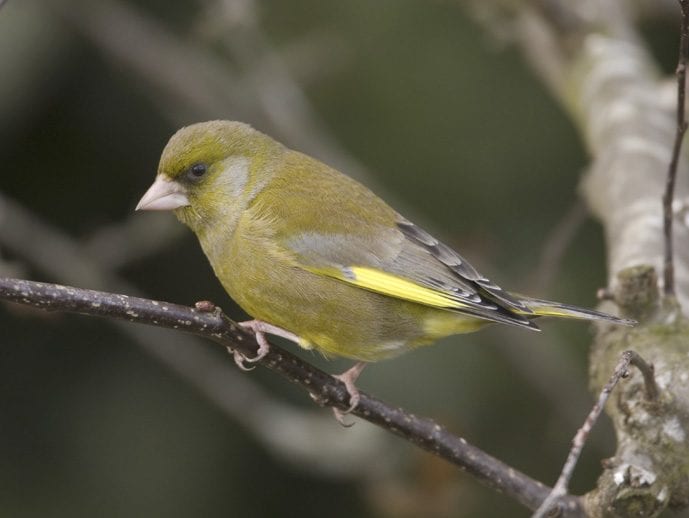
Supporting the Survey
The Irish Garden Bird Survey is once again sponsored by Ballymaloe, whose support in recent years has helped ensure the survey has gone from strength to strength, improving monitoring at national level and allowing for greater focus on conservation issues facing individual species.
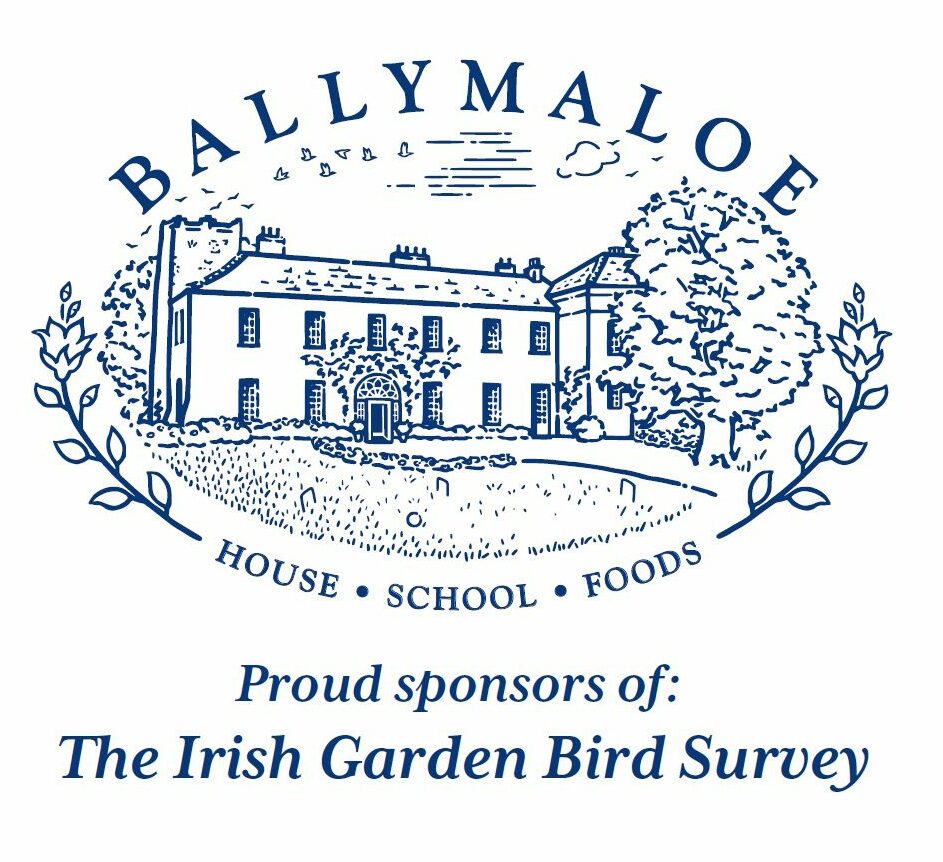
"Collectively Ballymaloe House, Ballymaloe Cookery School and Ballymaloe Foods are delighted to sponsor the Irish Garden Bird Survey annually in memory of our founder Ivan Allen. Ivan, Myrtle Allen's husband, loved the birdlife in and around Ballymaloe House and farmed considerately ensuring their natural habitat was undisturbed. His sustainable farming practices were undoubtedly ahead of their time. Supporting this Irish Garden Bird Survey is Ballymaloe businesses way to continually celebrate Ivan's passion for birdlife, whilst supporting Irish birdlife conservation in his name." Laura Behan, General Manager of Ballymaloe House.
To find out more about the survey and the different trends and patterns seen for different garden birds over the last 30 years, listen to the survey coordinator Brian Burke talk to Ricky Whelan and Niall Hatch for the 'In Your Nature' podcast, by clicking here.
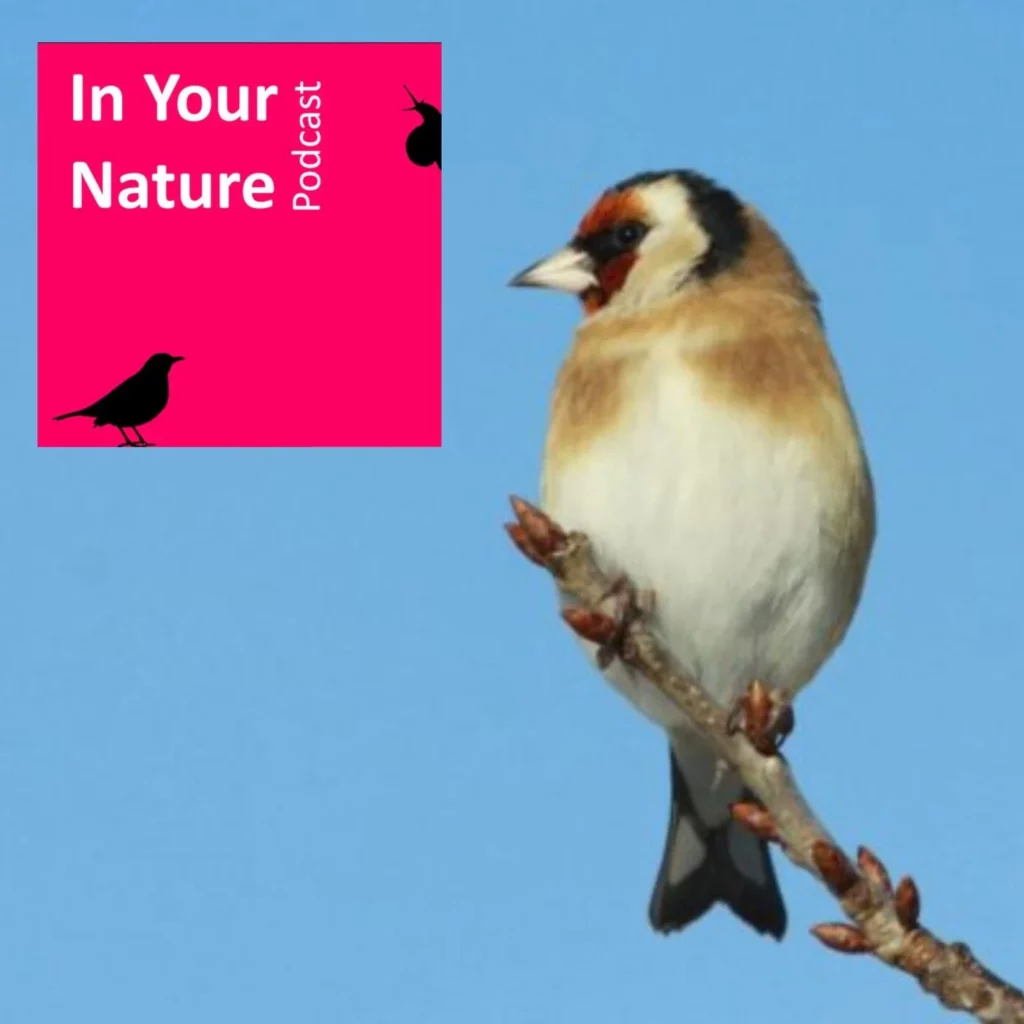
For full details about the survey, how to take part and looking after your garden birds, click here.
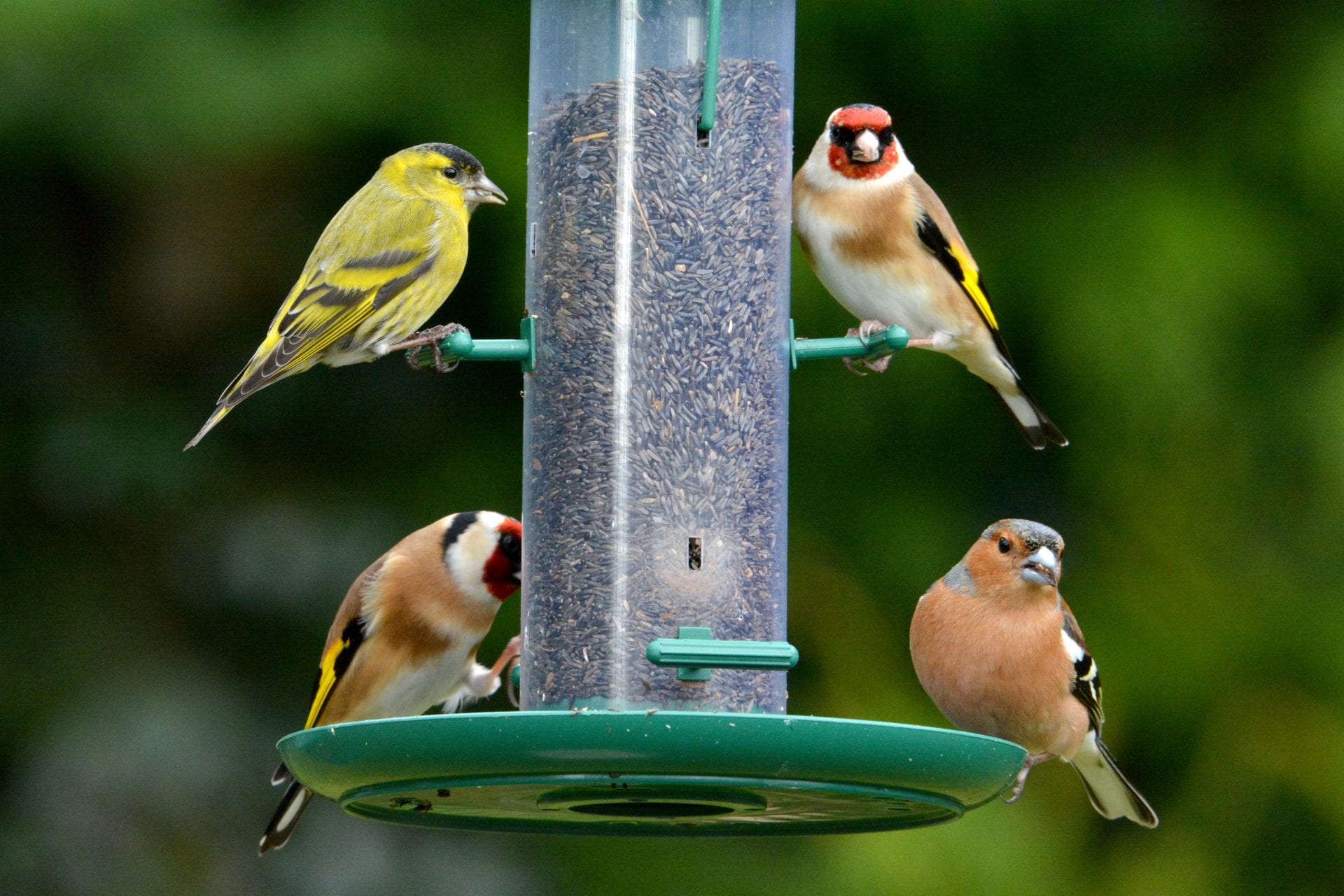
Where have all the Garden Birds gone?
Our annual Irish Garden Bird Survey returns at the end of this month! In recent weeks we’ve received lots of emails and phone calls from people around the country, reporting feeders completely untouched and barely a bird to be seen in their gardens. So, where have all the garden birds gone?
The first thing to say is that this is entirely normal and expected, and we see something similar happen at this time every year. If I asked you to cast your mind back to last winter, when the weather was cold, the days were short and the leaves were off the trees you could probably tell me about a long list of birds visiting your garden, but you’d likely be thinking of a bit later in the year rather than the end of October and start of November. That’s one of the reasons surveys like the Irish Garden Bird Survey are so important. By having a written record, we can ensure we’re comparing like with like over the years.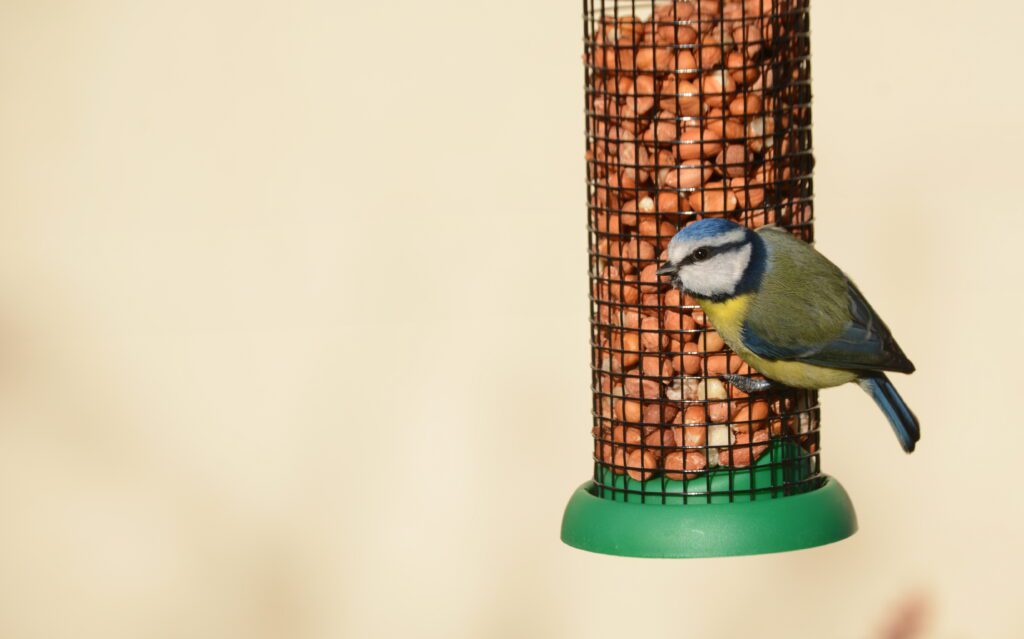
Reliable Return
From late summer onwards, most birds are finished nesting and therefore aren’t restricted to finding food in the immediate vicinity of their nests. They can travel wherever they want, and wherever the food is. This coincides with a time when there’s an abundance of berries, nuts, seeds and insects, from August to October. It's also a good way for the birds, especially the juveniles, to explore the wider landscape and get an idea where there's suitable habitat that they may need for nesting or feeding in the future. This year appears to have been a ‘mast year’ for many trees and shrubs, meaning they’ve produced a bumper crop for the birds to enjoy. So, the birds don’t really need peanuts and seed feeders as they have plenty of fresh natural food. This mast year is likely the reason we've had so many people contacting us this year regarding 'missing' garden birds, compared to previous years. As the weeks go on these natural food supplies will get depleted however, and the days will get shorter and colder, and over the course of November we’d expect to see the usual suite of bird species gradually returning to gardens. The first ones back will likely be the Tits, Robins and Dunnocks, with Blackbirds, Thrushes and Finches becoming more regular into December. The Irish Garden Bird Survey starts at the beginning of December each year (Monday 28th November this year), as this coincides with many birds having returned to gardens, though we continue to see a build in numbers until the new year.You can download the form for this year’s Irish Garden Bird Survey here.
More info about the Irish Garden Bird Survey and looking after your garden birds can be found here.
Feeding Advice
So, at the moment we suggest that you can either hold off putting out food for another few weeks, or you can put out a small amount of food in one or two feeders – enough so that the birds find it when they need it, but not so much that it’s getting wet and mouldy and needs to be thrown out! At present there’s no substantial concern about garden birds contracting avian influenza, though anyone with poultry or captive birds should follow department of agriculture guidelines and keep them away from wild birds.
Science Week on RTÉ
In less than two weeks time it will be Science Week (13th-20th November) and we’re delighted to be taking part in the Future Island programme on RTÉ television. We’ll be discussing the Irish Garden Bird Survey, which is Ireland’s longest running citizen science wildlife survey, and the various trends and patterns in numbers we’ve seen over the years. You can email the programme at birds@indiepics.ie with questions, photos or simply to let them/us know what birds are starting to return to your garden. The programme will be broadcast live on three nights over the course of Science Week, and we hope it’ll inspire households around the country to take part in this year’s survey.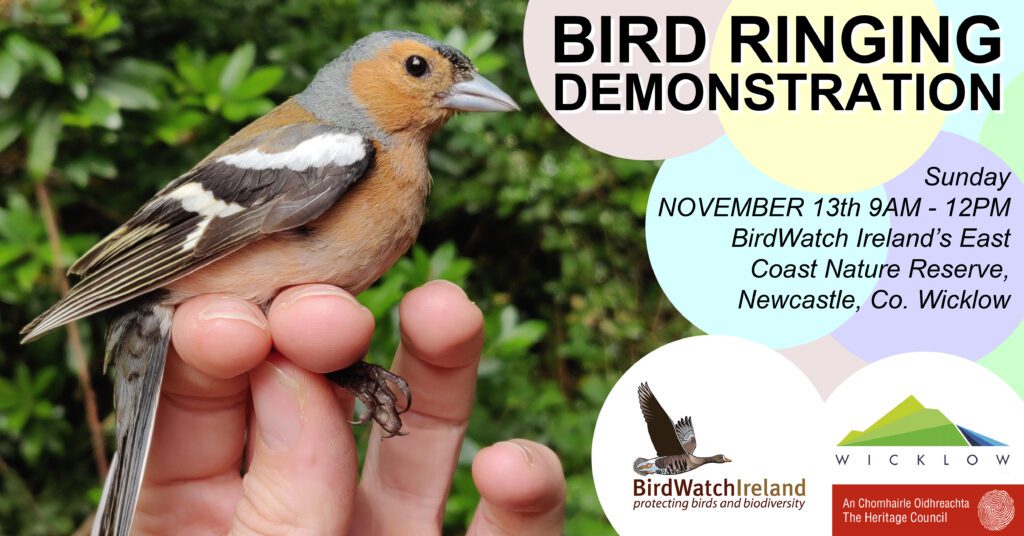 Up Close and Personal
We will be hosting a Ringing Demonstration at our East Coast Nature Reserve in Wicklow on Sunday 13th November, between 9am and 12. Come see some of your favourite garden birds in the hand. See how licensed bird ringers catch and ring birds using mist nets in order to study their life history and ecology. Bird ringing demonstration days are a great opportunity to see some of the best-loved birds up close and to find out more about this important conservation work. There will be an opportunity to ask questions, go through the key identification features and explain how to recognise the species in the field. Feel free to come and go anytime during the session as birds will need to released once ringed. Outdoor clothes advisable. Kindly funded by the Heritage Office of Wicklow County Council.
Up Close and Personal
We will be hosting a Ringing Demonstration at our East Coast Nature Reserve in Wicklow on Sunday 13th November, between 9am and 12. Come see some of your favourite garden birds in the hand. See how licensed bird ringers catch and ring birds using mist nets in order to study their life history and ecology. Bird ringing demonstration days are a great opportunity to see some of the best-loved birds up close and to find out more about this important conservation work. There will be an opportunity to ask questions, go through the key identification features and explain how to recognise the species in the field. Feel free to come and go anytime during the session as birds will need to released once ringed. Outdoor clothes advisable. Kindly funded by the Heritage Office of Wicklow County Council.

